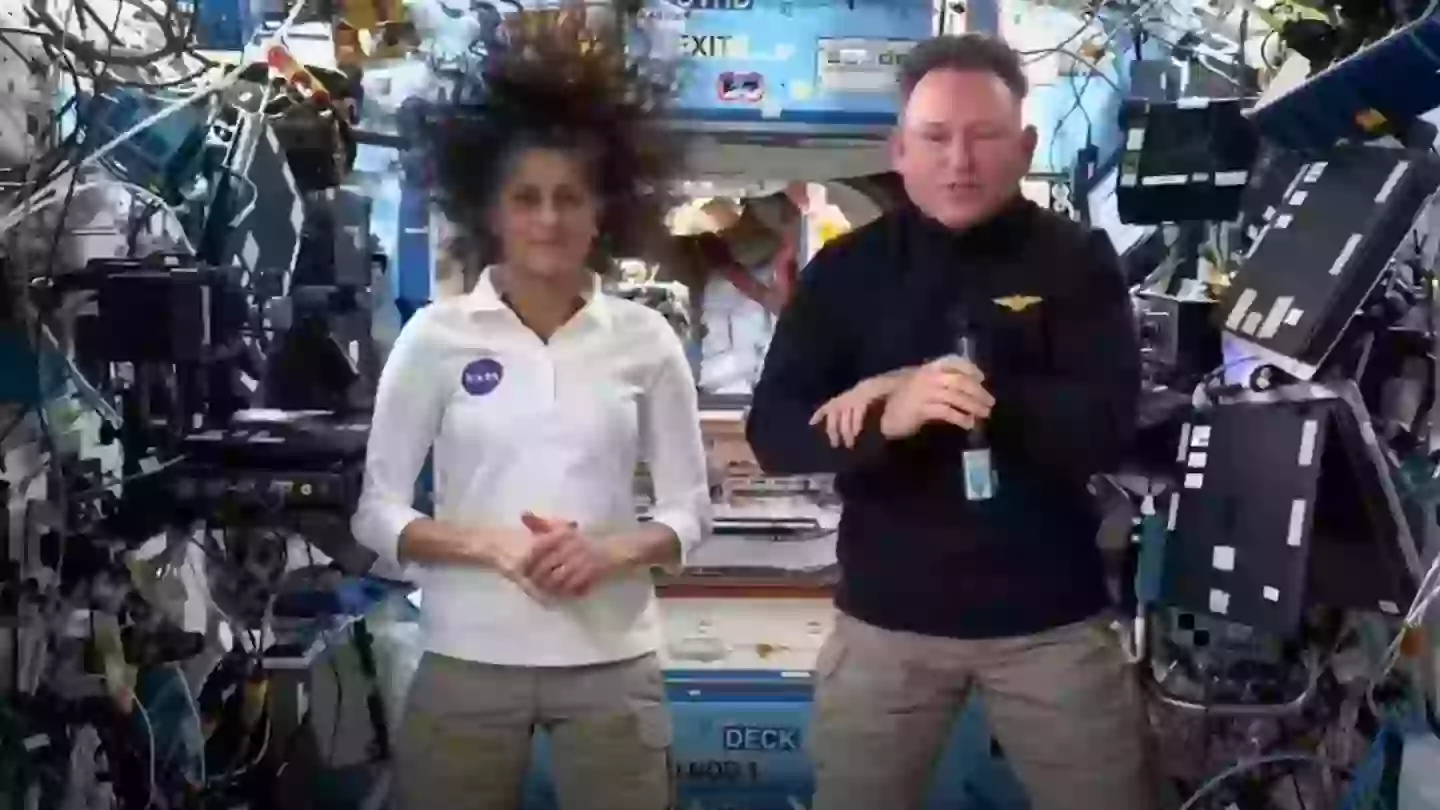
A space expert has revealed the shocking reality behind one of the serious health issues the NASA astronauts stranded on the International Space Station could face.
Suni Williams and Butch Wilmore's eight-day mission tragically turned into an eight-month nightmare when they departed Earth for the International Space Station (ISS) in June.
Unfortunately, technical issues with a Boeing Starliner Calypso capsule has meant the pair have had to extend their stay in space.
Advert
Earlier this week though, NASA and Elon Musk's SpaceX confirmed they plan on bringing Wiliams and Butchmore home next month.
If all things go as planned, they should be rescued as early as March 12.

Living 250 miles above sea level is no mean feat, and can certainly take its toll on the human body.
Advert
One health issue our astronauts face - especially spending such prolonged time in space - is the loss of bone density caused by microgravity.
NASA revealed astronauts can lose 'up to 1 percent to 2 percent of bone density per month in the hip and spine, compared to bone loss of 0.5 percent to 1 percent per year in post-menopausal women and much older men on Earth'.
As such, the pair have to conduct around two or more hours of exercise everyday to strengthen their bones that include weightlifting and cardio exercises.
Dr Tess Morris-Paterson, founder and managing director of Astro Perform, put into context the shocking risk of bone density loss in space for UNILAD.
Advert
For the first two weeks on the ISS, our bones deteriorate in the same way they would if we stayed home and laid in bed 'all day for two weeks,' Dr Tess explains. A nice little experiment if you ever wanted to try it...

She adds: "In the orbit that we currently have with the ISS, we know that within two weeks bone resorption occurs - the destruction of bone tissue that promotes bone loss - that bone formation is unchanged or decreases, that astronauts don't absorb as much calcium, and they have more calcium in their urine."
"So after even a very small amount of time, the body is preparing to lose bone according to the new situation."
Advert
After eight months on the ISS, Williams and Wilmore could've lost 12 percent of bone density from the worst-affected regions, including their hips and spine.
This can make their bones more prone to fracturing - the chance heightening the longer they're in orbit.
“The spine and pelvis decrease more than other parts of the body, but the trochanter - a small rounded point the femur near its joint with the hip bone - is the worst affected, decreasing 1.56 percent per month," Dr Tess explains.

Advert
But unusually, on landing, it's the astronaut's 'non-weight bearing bones' which take longer to recover, remaining 'below pre-flight levels even six to 12 months after the astronauts return.'
So, exercising daily can save our NASA astronauts from a lot of hassle.
Only, as Dr Tess explains, working out in space is a lot more challenging than back here on Earth.
"The exercise equipment has to be designed so that no vibrations are experienced in the spacecraft, which can additionally limit the load that can be implemented," Dr Tess explains.
As well as cardio equipment, there are Advanced Resistive Exercise Devices which 'use vacuum cylinders to create the force on the individual,' similar to weight lifting in the gym, just adapted for zero-gravity.
"It works with counterbalancing the force output with the vacuum cylinders. Therefore, when you push, it pushes back on you with a certain force or pressure," Dr Tess explains.
"You have to train for a lot longer to get the same stimulus... Astronauts will have to train for two hours a day, because the rest of the time, their body is not being 'loaded' or stressed by the every day affects of gravity - such as getting up out of a chair, or walking up stairs."
She concludes: "In fact, sometimes when astronauts return, their muscles have depleted everywhere except their arms, where they have been using them more to move around the station."
Next time you're thinking of skipping the gym, perhaps spare a thought for our astronauts on the ISS...
Topics: Space, NASA, Health, International Space Station, Science, Technology
